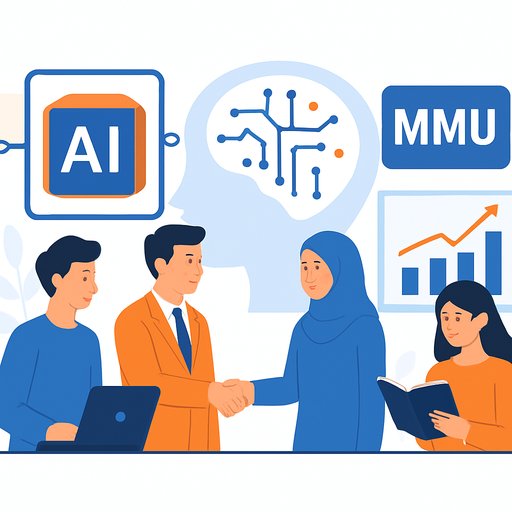Meta's AI Bet Just Got Bigger: What IT and Dev Teams Should Prepare For
Meta is signaling a major jump in capital spending to build out super-scale AI infrastructure. CFO Susan Li said capex will rise significantly in 2026 as data center builds accelerate and compute capacity is prioritized.
Mark Zuckerberg's message is simple: build compute fast, push AI hard, and be ready for scenarios up to super intelligence. He framed the strategy as optionality-extra capacity boosts the core business if timelines stretch, and provides coverage if progress comes sooner than expected.
Capex: Data Centers, GPUs, and Timelines
Meta lifted its 2025 capex floor from $66B to $70.72B and expects a "much larger" step-up in 2026. The spend focuses on new data centers, higher rack density, network upgrades, and more accelerators.
Translation for builders: more AI clusters, more memory bandwidth, more interconnect, and tighter integration across training, inference, and retrieval workloads. Expect stronger internal demand for efficient models, orchestration, and cost controls.
Financial Snapshot: Growth vs. Margin Pressure
Q3 2025 revenue grew 26%, beating expectations. Costs climbed 32%, pressuring margins and knocking shares down 8% after hours.
Meta also recorded a one-time ~$16B burden tied to President Donald Trump's "Big Beautiful Bill," taking quarterly net profit to $2.71B; excluding it, net would have been $18.64B. Guidance for Q4 revenue lands at $56-$59B, slightly above the consensus midpoint.
The Bet: Prepare for Super Intelligence, Benefit Either Way
Zuckerberg's stance: overbuild compute now. If super intelligence takes longer, the surplus accelerates ads, content ranking, and product features. If breakthroughs arrive early, Meta isn't caught short on capacity.
That strategic framing reduces regret. It also sets expectations: capex and opex will stay heavy while leadership chases AI scale.
Talent and Chips: The Arms Race
Meta launched Super Intelligence Labs, with Zuckerberg directly involved in hiring. Employee costs tied to AI hiring are expected to be the second-largest driver of rising expenses.
On hardware, Meta remains a top buyer of Nvidia AI chips, competing with Microsoft, Alphabet, Amazon, and OpenAI for supply. The industry is testing the limit of how much compute can be deployed and monetized quickly. Even OpenAI's Sam Altman floated ambitions equating to ~1 GW of compute per week-a staggering target by any standard.
Core Business Still Throws Off Fuel
More than 3.5B people use at least one Meta app daily. AI-driven ad systems now auto-translate campaigns, generate persona-based creatives, and optimize placements-strengthening monetization across WhatsApp and Threads while pushing into territory owned by X, TikTok, and YouTube Shorts.
Analysts note the tension: investors want quick payoffs, but Meta is building for a larger AI future. The customer base and ad engine continue to fund that plan.
What This Means for IT and Development Teams
- Model efficiency matters: Expect stronger internal push for quantization, sparsity, distillation, and caching to reduce inference costs.
- Retrieval and context pipelines: Build RAG systems that scale with fresher, domain-safe data and auditable outputs.
- Latency budgets tighten: Ads, feeds, and assistants need lower P95/P99. Optimize networking, batching, and KV cache reuse.
- Orchestration gets real: Multi-model routing, feature stores, and feature computation consistency become daily ops problems.
- Observability for AI: Track data drift, token spend, quality metrics, and safety signals like you track uptime.
- Data contracts: Schema and governance guardrails must be explicit. Downstream failures get expensive at this scale.
- Cost-aware design: Profile everything. Move workloads between GPUs/CPUs/DPUs where it makes sense. Rightsize context windows.
- Privacy and compliance: Regional routing, retention controls, and redaction pipelines will be table stakes.
Signals to Watch Next
- Capex cadence: PO volume for accelerators, memory, and optics; construction pace for new data halls.
- Model footprint: Shift in mix between frontier training vs. distilled and task-specific models for prod.
- Monetization: Incremental ad ROI and unit economics of AI features in WhatsApp, Threads, and newer surfaces.
- Supply constraints: Lead times for GPUs and switches; any pivot to custom silicon.
Practical Next Steps for Teams
- Baseline TCO per model and per feature. Set budgets per request and enforce.
- Pilot a retrieval layer with strict evals. Treat prompts, tools, and data as versioned artifacts.
- Adopt service-level objectives for quality (not just availability). Include eval gates in CI/CD.
- Prepare for multi-cloud or hybrid bursts as capacity contracts tighten.
Level Up Your AI Stack
If you're building or maintaining AI systems, staying current on infra, MLOps, and model engineering is the edge. Curated resources can save months of trial and error.
AI courses sorted by leading AI companies
AI certification for coding
Bottom line: Meta is building for a future where AI is the center of its products and profit engine. For engineers, the opportunity is clear-ship features that convert compute into outcomes, and make the infrastructure sweat less while doing it.
Your membership also unlocks:






